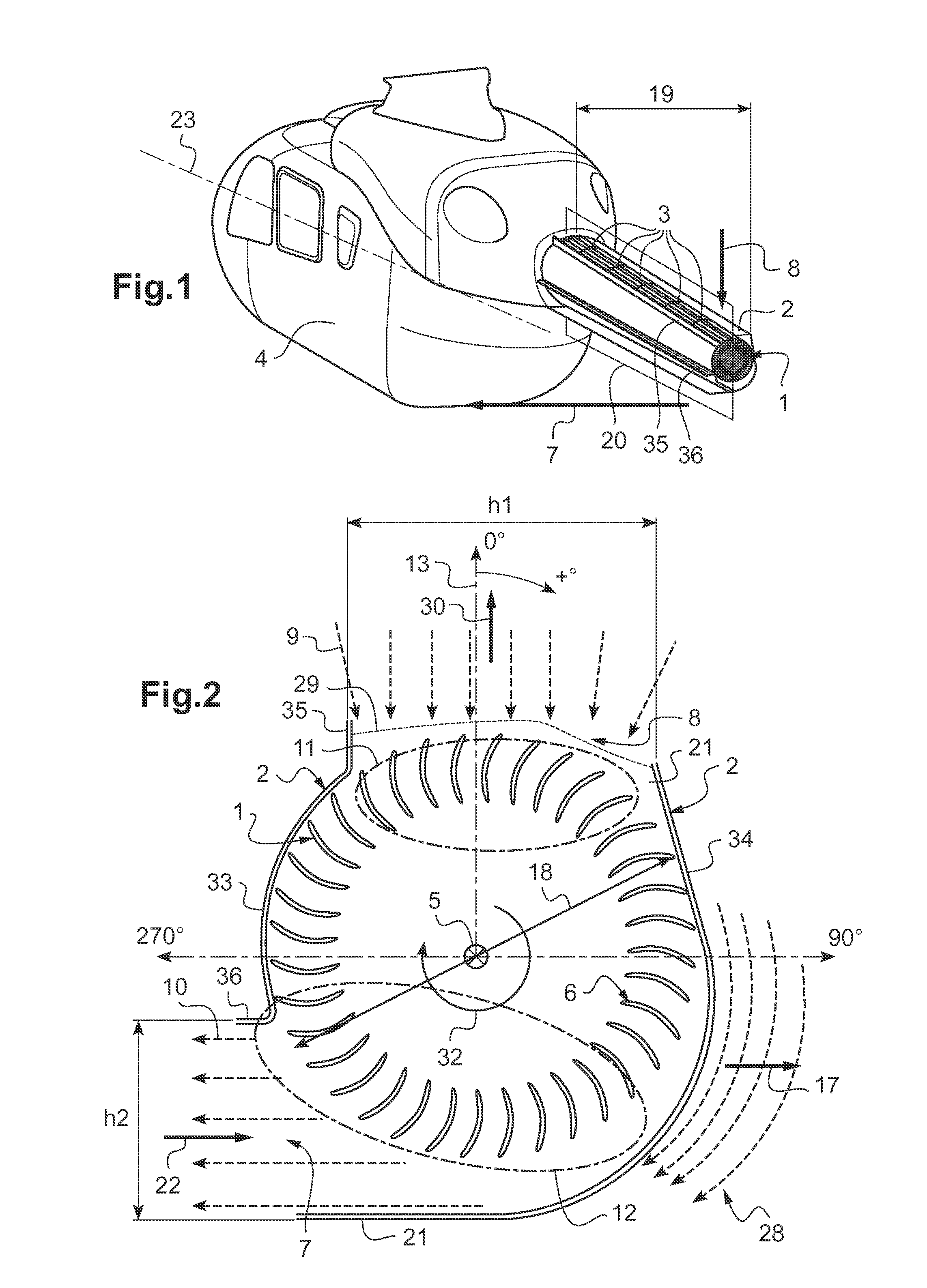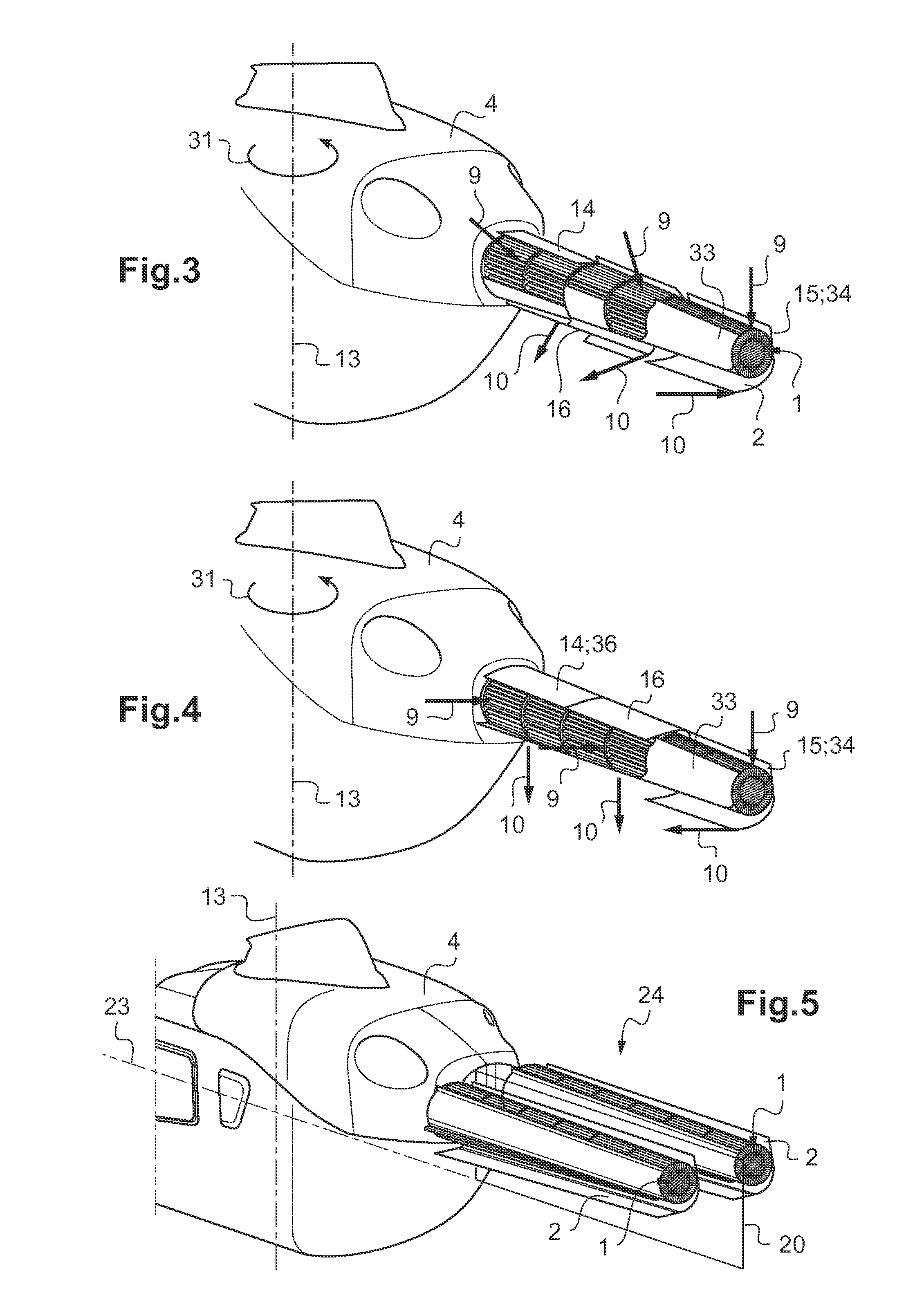Helicopter with cross-flow fan
a cross-flow fan and helicopter technology, applied in the field of helicopters, can solve the problems of affecting the performance of the helicopter, the ability to damage the open tail rotor, and the inability to fully achieve the minimum drag fuselage attitude, etc., and achieve the effect of improving performan
- Summary
- Abstract
- Description
- Claims
- Application Information
AI Technical Summary
Benefits of technology
Problems solved by technology
Method used
Image
Examples
Embodiment Construction
[0051]According to FIG. 1, a helicopter comprises a fuselage 4 with at least one driving unit, e.g. an integrated engine (not shown). The at least one integrated engine drives a main rotor (not shown) via a main gear box (not shown) mounted on top of the fuselage 4 of the helicopter. A rotation axis of the main rotor corresponds to a yaw axis 13 (see FIG. 3) of the helicopter.
[0052]A housing 2 of a cross flow fan is mounted to an aft region of said fuselage 4 with a roll axis 23 perpendicular to said yaw axis 13. Said housing 2 extends with angular variations of up to + / −15° relative to said yaw axis 13 essentially in direction of a roll axis 23 of the helicopter with an offset defined by a longitudinal extension 19 of the compressor 1 and housing 2 in direction of said roll axis 23 relative to said yaw axis 13.
[0053]A helicopter width is defined as the maximum distance between respective left hand and right hand surfaces of the fuselage 4 measured orthogonally to a helicopter mid-p...
PUM
 Login to View More
Login to View More Abstract
Description
Claims
Application Information
 Login to View More
Login to View More - R&D
- Intellectual Property
- Life Sciences
- Materials
- Tech Scout
- Unparalleled Data Quality
- Higher Quality Content
- 60% Fewer Hallucinations
Browse by: Latest US Patents, China's latest patents, Technical Efficacy Thesaurus, Application Domain, Technology Topic, Popular Technical Reports.
© 2025 PatSnap. All rights reserved.Legal|Privacy policy|Modern Slavery Act Transparency Statement|Sitemap|About US| Contact US: help@patsnap.com



